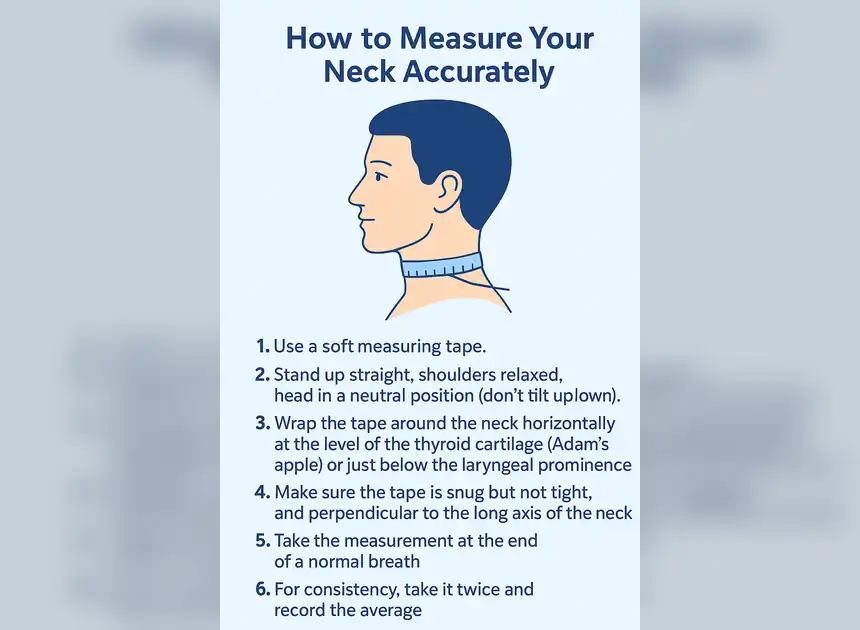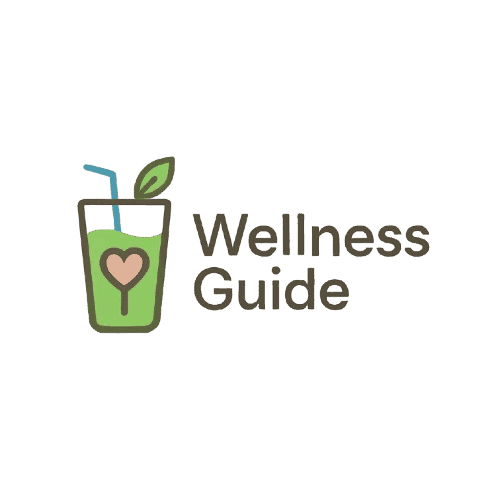Is Your Neck Size a Warning Sign for Diabetes or Heart Risk?
Could your neck size signal hidden diabetes or heart risk? New studies link a larger neck circumference to higher blood sugar, type 2 diabetes, and cardiovascular risk. Learn how to measure your neck, which tests to request, and when to see a doctor — read practical, evidence-based guidance now.
Could Your Neck Size Predict Diabetes or Heart Risk? Learn What the Studies ShowYour neck measurement can reveal hidden risk: a larger neck circumference has been associated with changes in blood sugar levels and early signs of diabetes, and predicts a higher risk of type 2 diabetes in population studies.[1]
It is also linked to future heart disease and broader cardiovascular disease, often together with high cholesterol and LDL cholesterol, high markers that raise the chance of serious heart problems. [2]
How to Measure Your Neck Accurately
- Use a soft measuring tape.
- Stand up straight, shoulders relaxed, head in a neutral position (don’t tilt up or down).
- Wrap the tape around the neck horizontally at the level of the thyroid cartilage (Adam’s apple) or just below the laryngeal prominence.[14]
- Make sure the tape is snug but not tight, and perpendicular to the long axis of the neck.
- Take the measurement at the end of a normal breath.
- For consistency, take it twice and record the average.

What a larger neck might mean (simple, research-backed)
- A sign of upper-body fat and metabolic risk. A larger neck circumference often reflects extra fat in the upper body and is linked with higher cardiometabolic risk in population studies. [3]
- Higher chance of developing type 2 diabetes. People with greater neck measurements have been shown to have higher fasting glucose and a higher incidence of type 2 diabetes in prospective studies. [4]
- Associated with unhealthy cholesterol and heart risk. Larger neck size correlates with adverse lipid patterns and is associated in some cohorts with increased risk of cardiovascular events. [4]
- A predictor of sleep apnea, which stresses the heart. Neck circumference is one of the best simple measures that predict obstructive sleep apnea; untreated sleep apnea raises blood pressure and cardiac strain. [5]
- Sometimes not metabolic — check structural causes. A clearly asymmetric or rapidly growing neck may be due to thyroid enlargement (goiter) or rare fat-deposition disorders and needs clinical evaluation. [6]
- Why Your Neck Size Might Change: A larger neck can result from muscle growth, higher testosterone, or natural build—but sudden or uneven changes may signal thyroid issues or fat buildup linked to insulin resistance.
Health Screening Tests
- Fasting blood sugar (glucose) & HbA1c — These tests check how your body handles sugar over time and assess your risk for type 2 diabetes. [13]
- Lipid profile — This panel measures total cholesterol, LDL (“bad” cholesterol), HDL (“good” cholesterol), and triglycerides to evaluate your risk for heart disease and cardiovascular problems.
- Thyroid function tests (TSH, Free T4, sometimes Free T3 and antibodies) — These help determine if an enlarged neck is due to thyroid gland issues such as an underactive or overactive thyroid, or a goiter. [7]
- Neck-specific examination and possibly ultrasound — If your neck size has increased rapidly, is asymmetric, or is associated with symptoms like difficulty swallowing, hoarseness, or breathing issues, an ultrasound or referral to an ENT/Endocrine specialist may be required to assess structural causes (e.g., nodules or thyroid enlargement). [8]
Top Recommended Cancer Screenings to Ask Your Doctor About
- Breast cancer: Women aged ~40 and older should discuss regular mammograms.[9]
- Cervical cancer: People with a cervix should start screening with HPV or Pap tests from about age 25 to 65. [9]
- Colorectal cancer (colon & rectum): Screening (colonoscopy, stool tests) is recommended from age 45 for average risk. [10]
- Lung cancer: For people with a history of heavy smoking, annual low-dose CT scans may be advised. [9]
- Prostate cancer: Men should have a shared decision discussion starting around age 45–50 if they have higher risk. [11]
- Skin cancer / head & neck cancer: Regular skin checks (self-exam + physician check), especially with many moles, sun exposure, or tanning bed use. Your doctor may examine head/neck areas. [12]
Conclusion
The diagnostic tests described above offer a roadmap for detecting early signs of metabolic or structural disorders. However, normal ranges are guideposts—not guarantees. If you notice any neck enlargement, asymmetry, firmness, or related symptoms (e.g. difficulty swallowing, hoarseness, or new snoring), it is critical to consult your physician promptly and undergo any additional tests they recommend. Use these tests as tools—not as a substitute—for professional medical evaluation and care.
Resources
- Association between neck circumference and diabetes mellitus: a systematic review and meta-analysis ,doi: 10.1186/s13098-023-01111-z ,PMC PubMed Central
- The association of neck circumference with risk of metabolic syndrome and its components in adults: A systematic review and meta-analysis , pure.johnshopkins.edu
- Neck circumference and its association with cardiometabolic risk factors: a systematic review and meta-analysis , doi: 10.1186/s13098-018-0373-y , PMC PubMed Central
- Neck Circumference and Incidence of Diabetes Mellitus over 10 Years in the Korean Genome and Epidemiology Study (KoGES) , nature.com
- Neck Circumference-Height Ratio as a Predictor of Sleep Related Breathing Disorder in Children and Adults , doi: 10.5664/jcsm.5572 , PMC PubMed Central
- Goiter , mayoclinic.org
- Thyroid Tests , clevelandclinic.org
- Management of THYROID DISORDERS , moh.gov.my
- American Cancer Society Guidelines for the Early Detection of Cancer , cancer.org
- Screening Tests , cancer.gov
- Cancer Screening Guidelines by Age , cancer.org
- General Cancer Screening Guidelines , clevelandclinic.org
- Cut-off points of neck and waist circumference as predictors of obstructive sleep apnea in the Colombian population: a comparison with polysomnography , doi: 10.1590/1516-3180.2022.0415.R2.310523 , PMC PubMed Central
- Neck Circumference , .sciencedirect.com
How we reviewed this article
Sources
Our experts continually monitor the health and wellness space, and we update articles when new information becomes available.
Current Version
October 25, 2025
Written By
Nour Hany
Edited By
KirolosReda
Medically Reviewed By
Dr. Ahmed Mostafa Mostafa
Leave a comment
Your email address will not be published. Required fields are marked *


